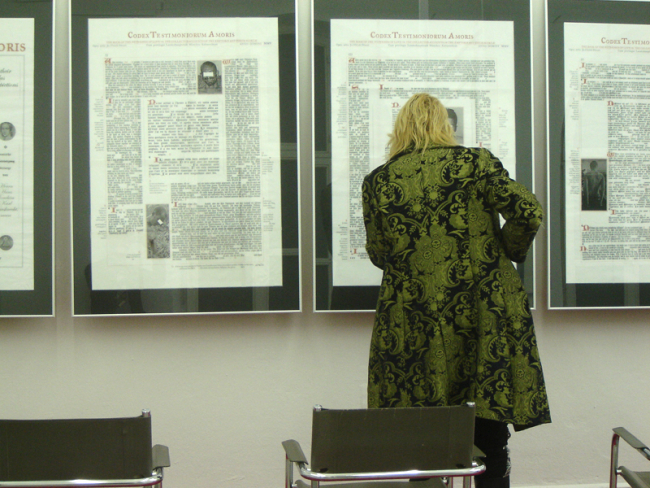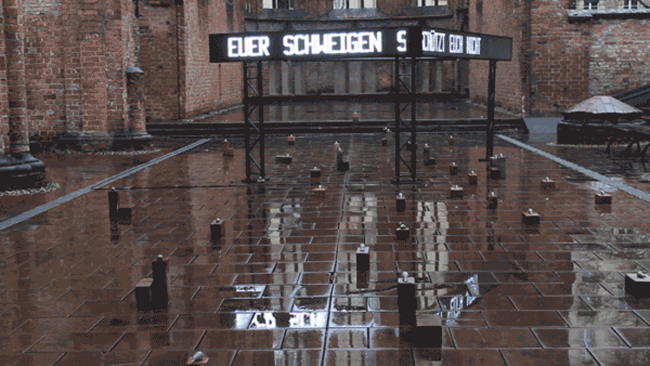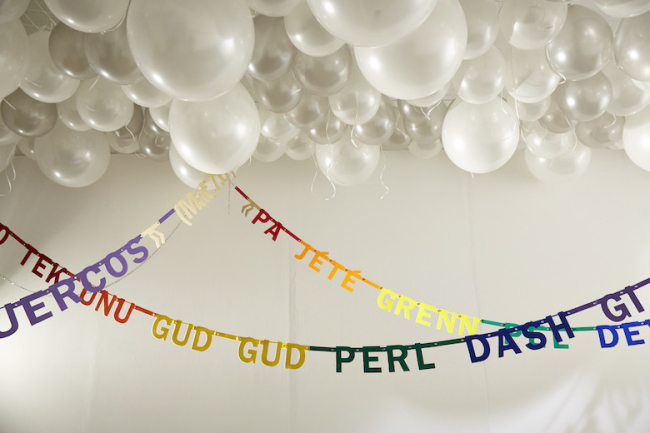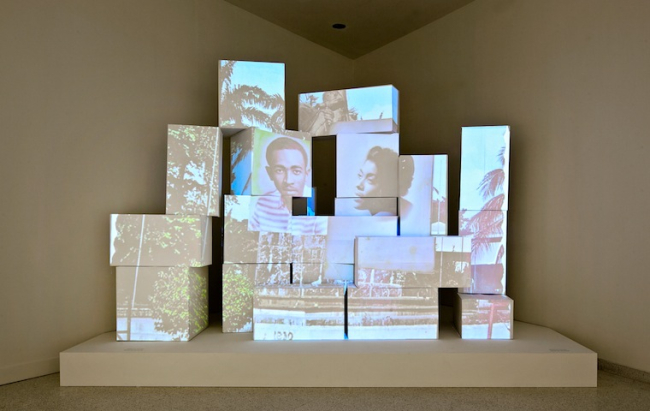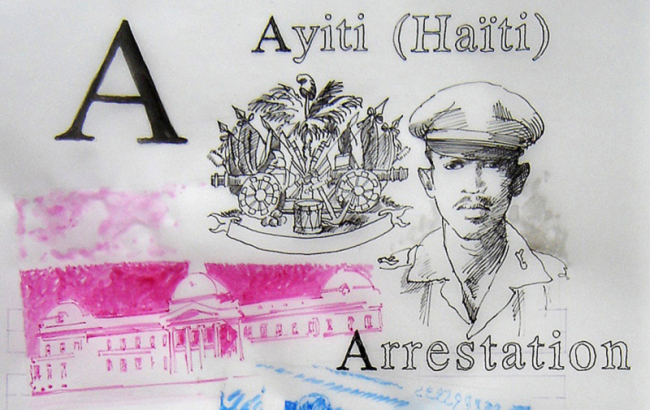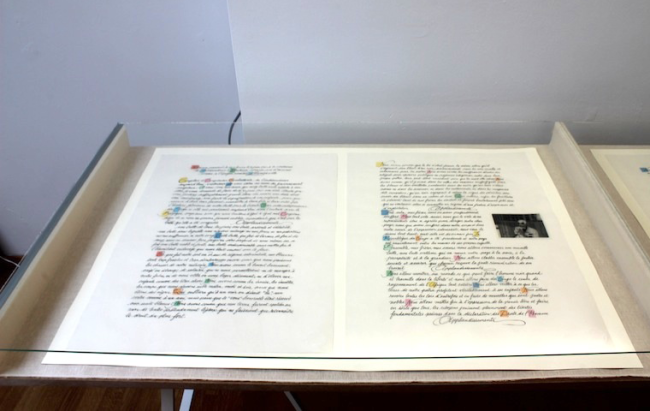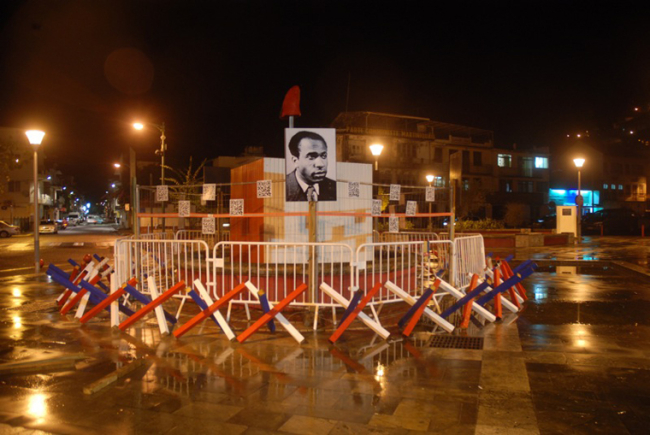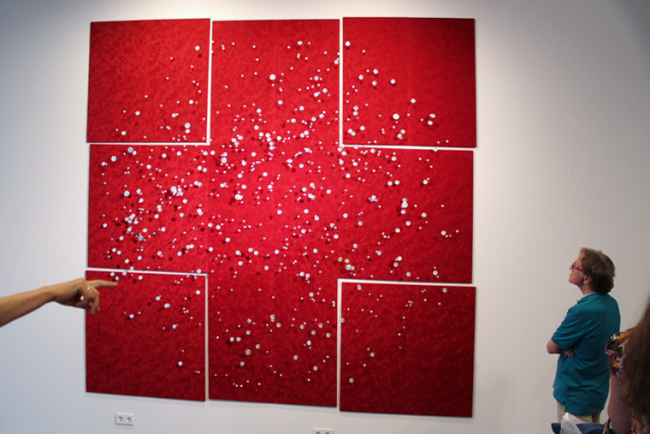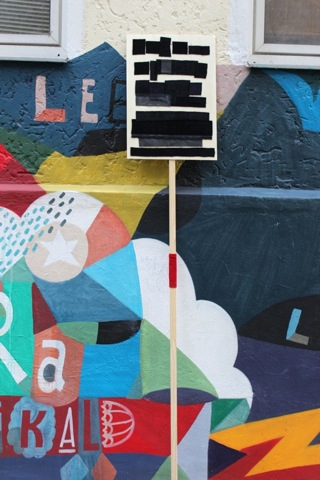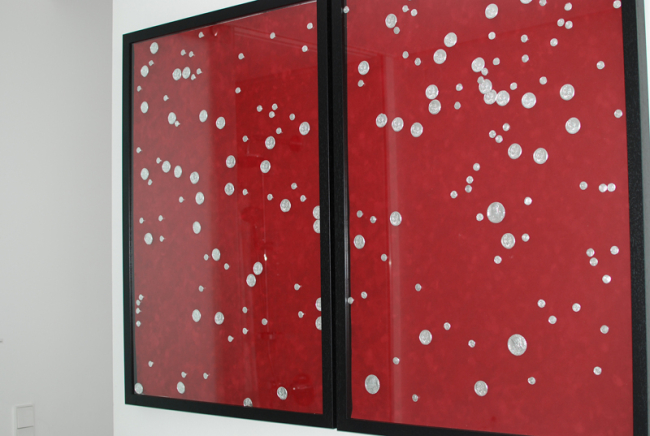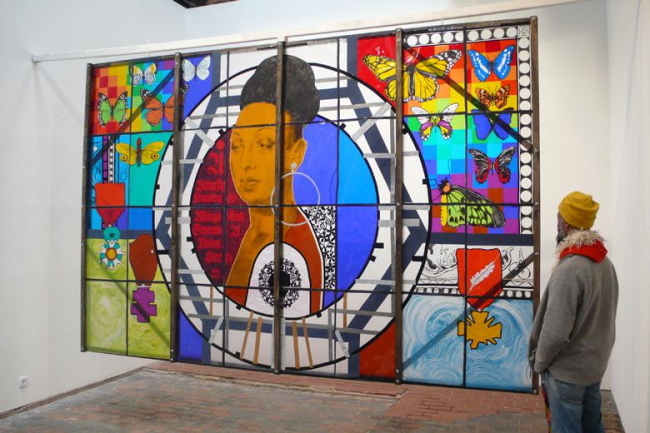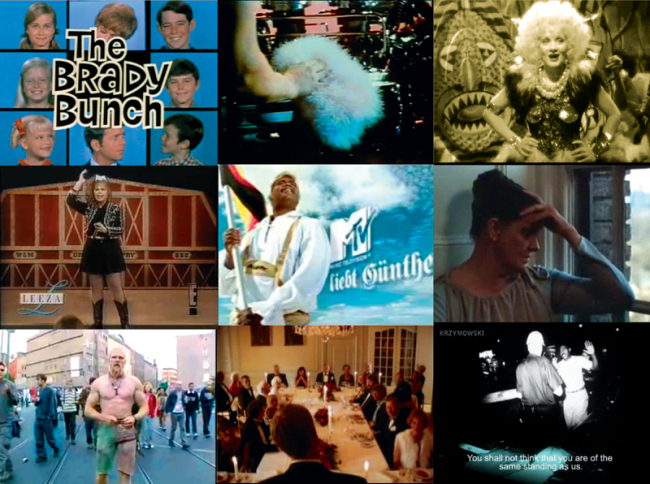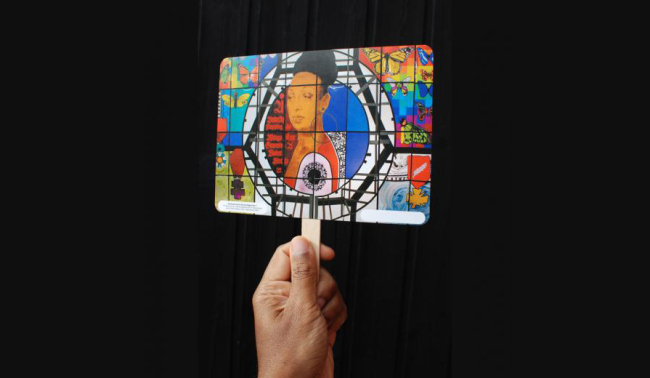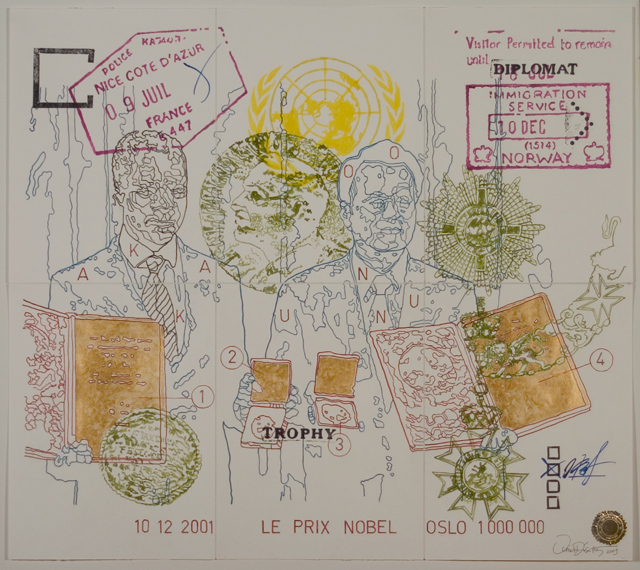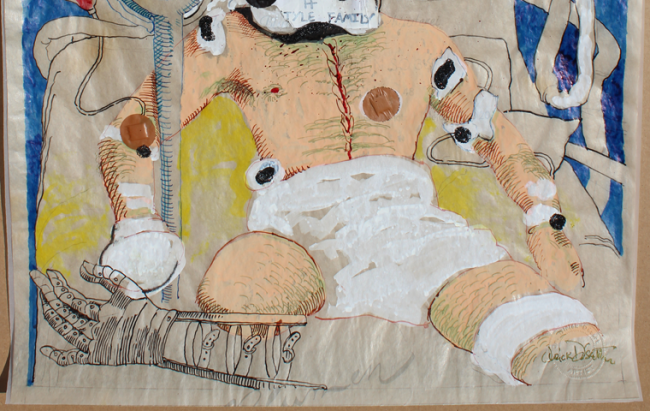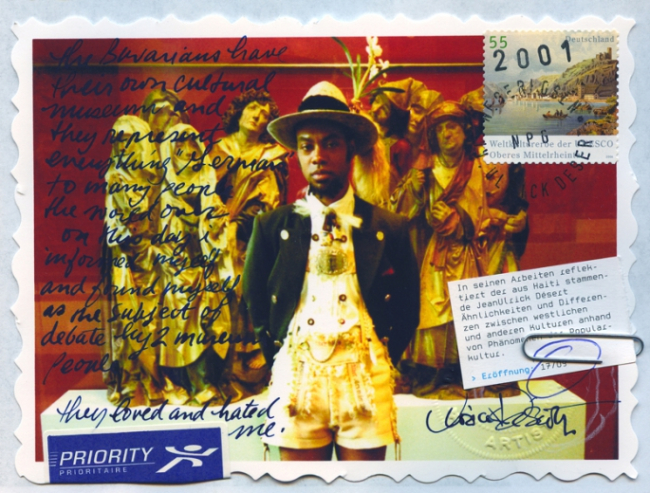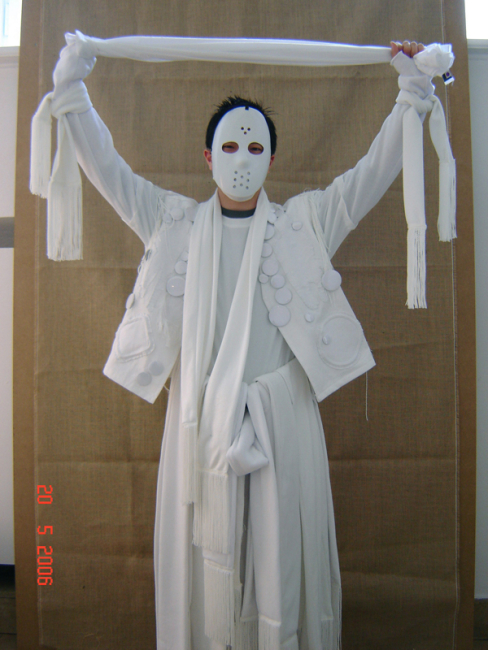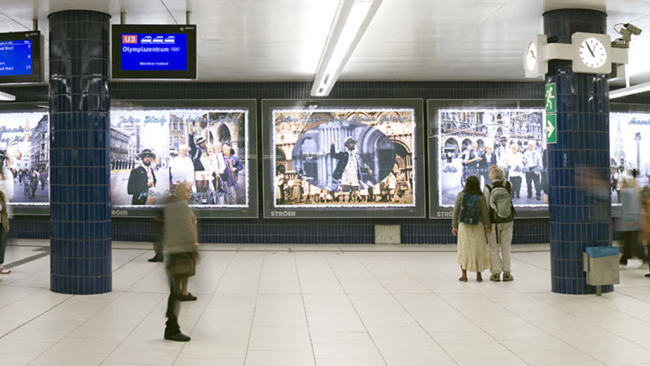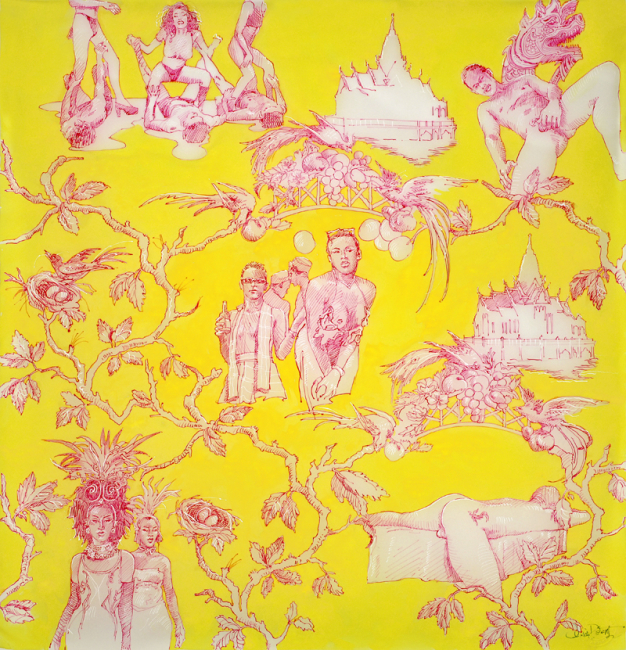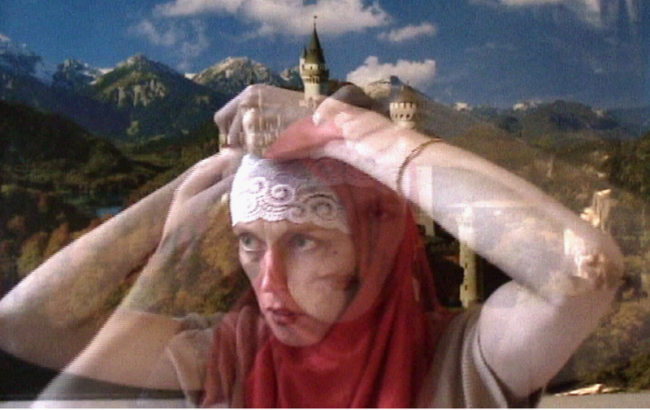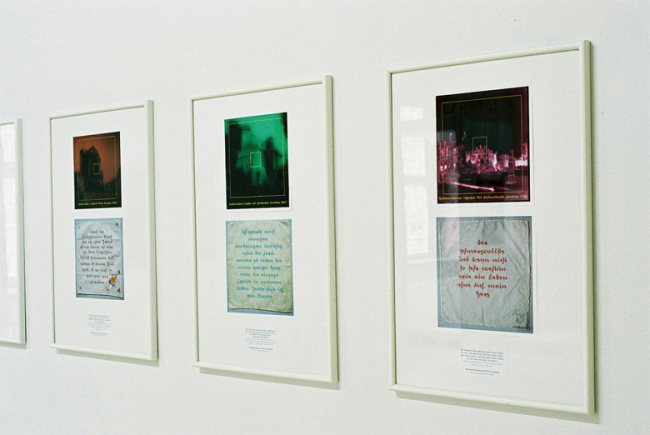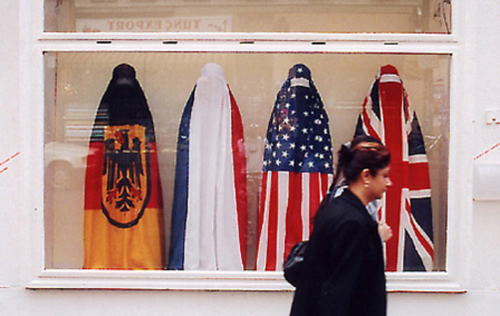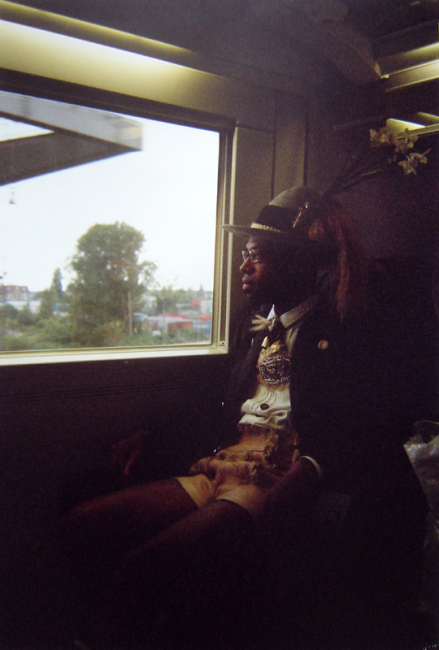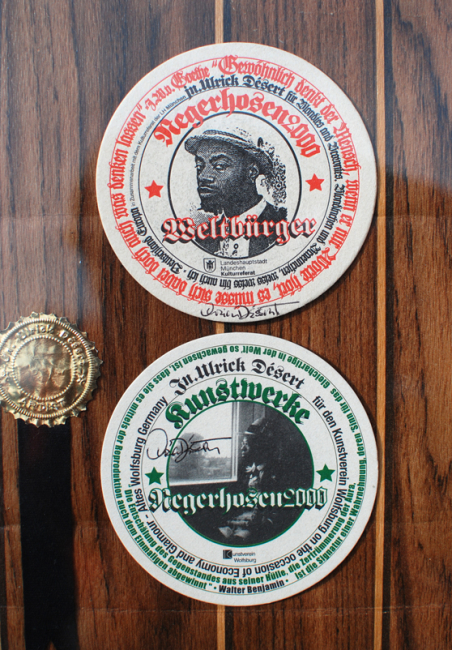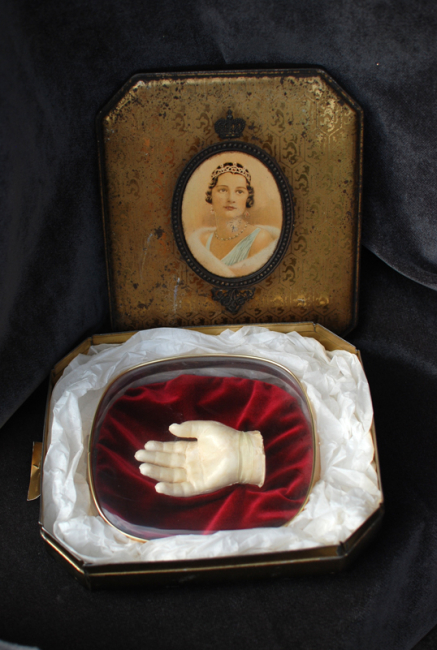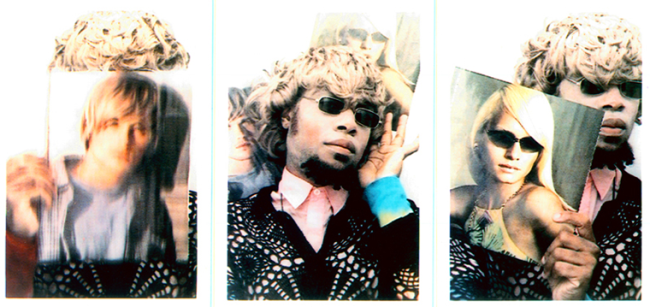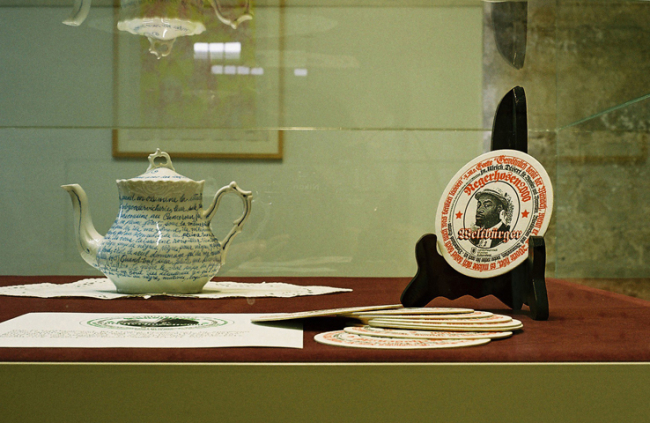-OR- THE COLLECTED ACCOUNTS OF THE EMPTORIS DEPICTING THEIR EXPERIENCES WITH THE SCORTÆ DE GENUS MASCULUS OF LANDESHAUPSTADT MÜNCHEN INCLUDING MANY DEPICTIONS OF THE LATTER COMPILED & ANNOTATED FOR THE MORAL EDUCATION OF THE GOOD
In this work, Jean-Ulrick Désert calls attention to the oft-neglected, yet essential fixture on the balance sheets of the prostitution economy, the John (the client).
The artist presents the wants, wishes, desires and experiences of the John in an ecclesiastical style against a backdrop of a society assured of their moral superiority and in the context of the murder of
a prominent German socialite at the hands of an Iraqi immigrant.
Codex Testimoniorum Amoris is arranged in a manner which invites study. Particular care is taken to explore a series of issues deemed contentious within the catholic region of Bavaria. The artist allows the viewer to fill in the gaps and imagine for themselves what might have stood in place by purposefully removing all sexually explicit words, names or acts.
The artist draws on the Barberini Faun, a marble sculpture by Giuseppe Giorgetti on view at the Glyptothek in Munich, as a motif and as a wink to the absurdity of a culture, profusely hypersexual and yet latent in its acknowledgment of that sexuality.
Text: Mokia Laisin
Eight panels document in German, French and English descriptions by the most invisible contributor in the economy of prostitution, the John. The descriptions of their experiences are rendered in old gothic type using the conventions of illuminated manuscripts. The installation is arranged in the form of a manuscript study hall for the public to study and read. Codex Testimoniorum Amoris was commissioned by the Arts Council of Munich and exhibited in the Galleries of City Hall. Additional private funding was withdrawn by co-sponsors when it was revealed that the artist would explore such a questionable subject in the Catholic region.
An effort was made to explore this difficult subject in an elegant manner without the use of exploitative images or texts. All explicit words, names, acts are left for the viewer to imagine, making the texts both more opaque as well as fluid and interpretable by the viewer. Each plate has a different set of texts as well as a different classic text composition using established conventions of scholarly annotations and remarks solely with the voice of the buyers.
German description:
Digitalausdruck auf transparentpapier im 8 DinA0 Rahmen, rotes teppich, 8Stuhle, 800 cm x250 cm
Der nicht lange zurückliegende Mord an Rudolf Moshammer hat den amerikanischen Künstler Jean-Ulrick Désert zu einer Außeinandersetzung mit dem Thema der Prostitution in München angeregt. Vielfältige Formen der Tabuisierung, Dämonisierung oder auch Hygienisierung markieren dabei unterschiedliche Konzepte von Moral, Lust, Ökonomie und Macht und finden ihren äußeren Ausdruck in einer Palette unterschiedlicher Rituale und Ikonographien. Diese Gemengelage untersucht Désert mit der ihm eigenen Technik ungewöhnlicher und verstörender Gegenüberstellungen.
Auf acht Tafeln werden in Deutsch, Französisch und Englisch Selbstaussagen der Freier als den am wenigsten wahrgenommenen Beteiligten im Prostitutionsgeschäft dokumentiert. Die Beschreibungen ihrer Erfahrungen sind in Fraktur und unter Benutzung von Darstellungsweisen illuminierter Handschriften wiedergegeben. Die Installation wird dem Publikum in Form einer Manuskriptausstellung präsentiert. Codex Testimoniorum Amoris wurde als Auftragsarbeit für das Kulturreferat München in der Rathausgalerie München gezeigt. Ein privater Sponsor zog sich nach Bekanntwerden des Themas Prostitution in dieser vorwiegend katholischen Region aus dem Projekt zurück.
Der Künstler hat sich bemüht, die Verwendung ausbeuterischer Texte oder Bilder zu vermeiden. Anzügliche Wörter, Namen und Handlungen bleiben der Phantasie des Betrachters überlassen und machen in ihrem Fehlen den Text zugleich weniger durchschaubar als auch lebendiger und interpretierbarer. Jede Tafel zeigt eine eigene Textzusammenstellung. Die Ansichten der Freier sind typographisch als Anmerkungen und Marginalien wiedergegeben.
Material & Format:
Digital prints on vellum papers, carpet and 8 chairs
± 8M x2,5M x 2M [70cmx100cm per panel– 8 panels in total]
